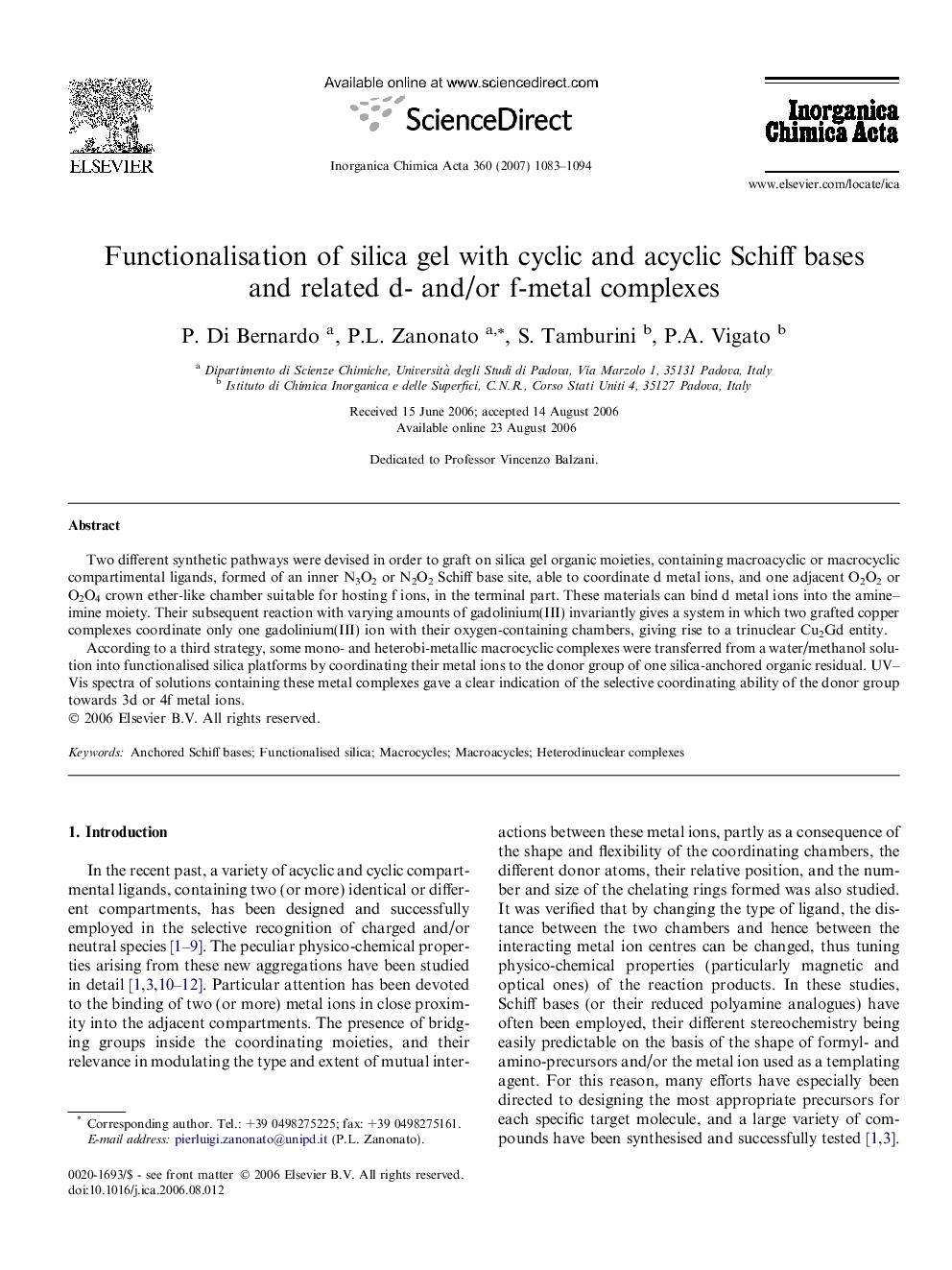| Article ID | Journal | Published Year | Pages | File Type |
|---|---|---|---|---|
| 1312788 | Inorganica Chimica Acta | 2007 | 12 Pages |
Two different synthetic pathways were devised in order to graft on silica gel organic moieties, containing macroacyclic or macrocyclic compartimental ligands, formed of an inner N3O2 or N2O2 Schiff base site, able to coordinate d metal ions, and one adjacent O2O2 or O2O4 crown ether-like chamber suitable for hosting f ions, in the terminal part. These materials can bind d metal ions into the amine–imine moiety. Their subsequent reaction with varying amounts of gadolinium(III) invariantly gives a system in which two grafted copper complexes coordinate only one gadolinium(III) ion with their oxygen-containing chambers, giving rise to a trinuclear Cu2Gd entity.According to a third strategy, some mono- and heterobi-metallic macrocyclic complexes were transferred from a water/methanol solution into functionalised silica platforms by coordinating their metal ions to the donor group of one silica-anchored organic residual. UV–Vis spectra of solutions containing these metal complexes gave a clear indication of the selective coordinating ability of the donor group towards 3d or 4f metal ions.
Graphical abstractHeteropolytopic compartimental ligands able to coordinate d and f ions have been grafted on silica. The materials bind d metal ions into an amine–imine moiety and gadolinum(III) in a trinuclear Cu2Gd entity.Mono- and heterobi-metallic macrocyclic complexes were transferred from solution to functionalised silica platforms by coordination of one of their metal ions.Figure optionsDownload full-size imageDownload as PowerPoint slide
